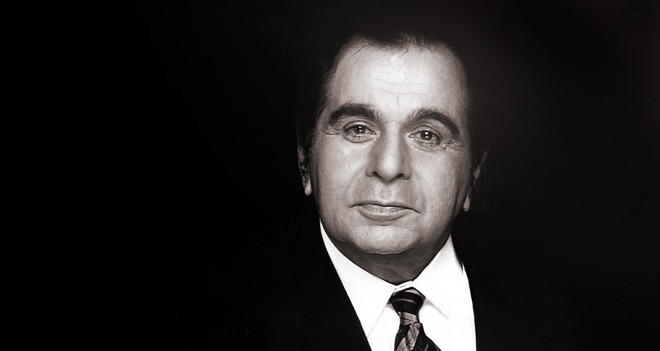
While others emulated film stars and styles of film making, Dilip Kumar was an original

When Dilip Kumar read in books and magazines about himself, he oftencomplained of the errors, distortions, half truths and disinformation. So one day Saira Banu suggested to him that he should pen his own biography to put the record straight. The Substance and the Shadow, as told to Udaya Tara Nayar, is the autobiography of Dilip Kumar but it has not really been able to clear all the cobwebs that have been weaved over decades making Dilip Kumar the focus of intense attention.
For one, the book is shoddily produced. The way it has been paced does not facilitate the flow of the narrative. It also appears Dilip Kumar left it far too late to write his memoirs; if he had been younger he would have had the energy to pay more attention to the final product which suffers badly from supervision in editing and graphic design.
Any autobiography of Dilip Kumar was bound to be disappointing because his fans which run into hundred of thousands, if not millions are so much in love with him. He means so much to them and this larger than life adulation can never be matched by bland recordings of the hero’s life, adventures and above all love affairs. It had to be a notch below expectation, and so it is. But at the same time the book has many tender moments and frank admissions that would only endear Dilip Kumar to his fans and more critical readers of the book.
His recounting of his love affairs with Kamini Kaushal and above all Madhubala lacked the fire, brimstone and passion that they must have generated; both have been treated in a very cold dispassionate manner like recounting the collapse of a business deal and that too in the distant past. His explanation of his short lived second marriage remains garbled and on close reading it appears it was meant to be garbled.
He did not speak to his sister Akhter till she was on her death bed after she eloped and became K. Asif’s third wife. Then for years he remained single and the only explanation he offered was that he had a large family to support and many sisters to be married off. This is South Asian, despite the fame and the fortune which creates a grand illusion about the tinsel town personalities, pushing the real man and the woman far into the shadows.
It was a fairy tale beginning reinforcing the dust to gold impression that show business garners. Dilip Kumar becoming a film hero was as accidental as it got. He was on a railway station transiting while looking for a job when he met Dr.Masani, a psychologist who had lectured the students at Wilson College where Dilip Kumar was a student. Dr Masani suggested that the young Yusuf Khan joined the films and then took him to see Devika Rani who was then running the Bombay Talkies after the death of her husband Himanshu Rai. Rechristened as Dilip Kumar, he was cast in Jwar Bhata.
Yusuf Khan, the son of a fruit merchant Ghulam Sarwar and Ayesha Bibi hailing from Peshawar but living in Bombay, ended up by becoming a film hero. This of course had to be kept hidden from the father who often bantered with Basheshwarnath, the grandfather of Raj Kapoor about his sons and grandsons having joined a disreputable profession like the films. But it was then their turn to get their back.
When Jugnu became a hit the same Basheshwarnath took Dilip Kumar’s father to see a poster with his son’s, that is Yusuf Khan’s image on it. The father was unbelieving and dumbstruck and confronted his son. On discovering the truth, he stopped talking to him. It was only the intervention of Prithviraj Kapoor that restored an edgy normalcy to the father son relationship.
As it transpired in the book the relationship between the two families from Peshawar was very cordial and their was warm friendship between the very introvert Dilip Kumar and very extrovert Raj Kapoor.
When Dilip Kumar went back to India after visiting Peshawar in 1988 Raj Kapoor was in a state of coma and hospitalised. It was a touching episode as narrated by Rishi Kapoor -- Dilip Kumar sat by his bedside, holding his hand and whispering in that unconscious state about their beloved Peshawar which he had visited after 50 odd years.
It can be said with honesty that he was an original. While others imitated or emulated other film stars and styles of filmmaking in India, he carved a place for himself by creating his own style. He studied and carefully examined the character types within the subcontinent and, in a definitive way, was able to project their inner most self on the big screen. It wasn’t something contemporary like the Nehruvian ideal or as the preserver of law and order that struck the chord with the times but it was something primordial, the sad tragic destiny that confronts mankind which is beyond the remedial recipes offered by epochs or eras.
He was so engrossed in those tragic roles that made him so successful and a great actor that he had to seek medical advice to break out of that mode. Since it had started to affect his health, he needed to distinguish the person from the character that he was playing. He also offered that as an explanation for choosing to create more diversity in his roles.
There are comments by other well-known film personalities in the book and it appears that they give more lively information compared to the bland narrative of the book.